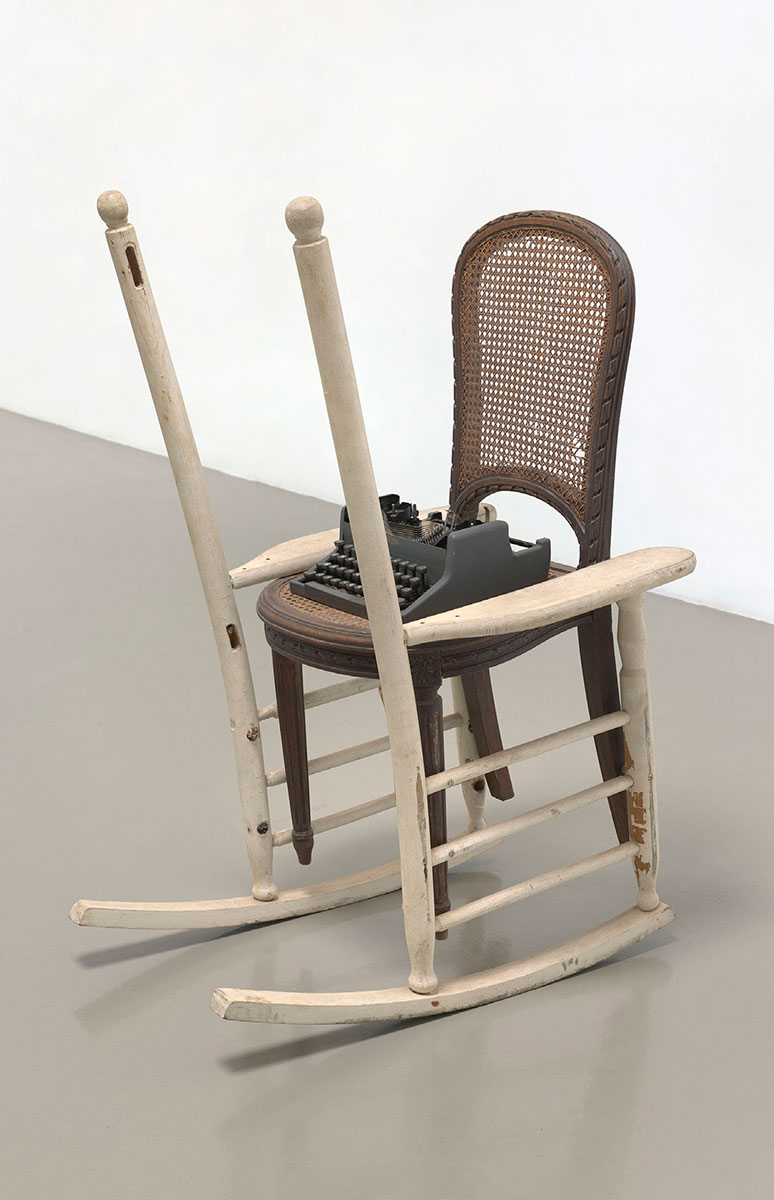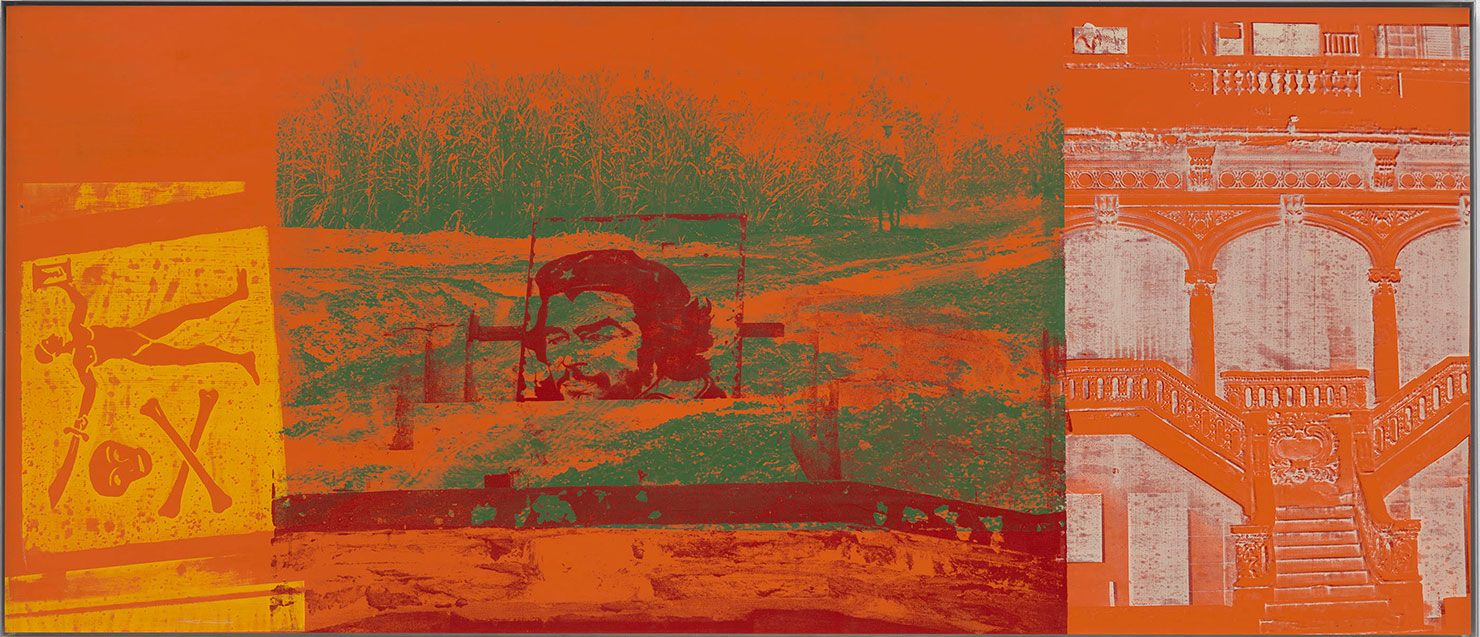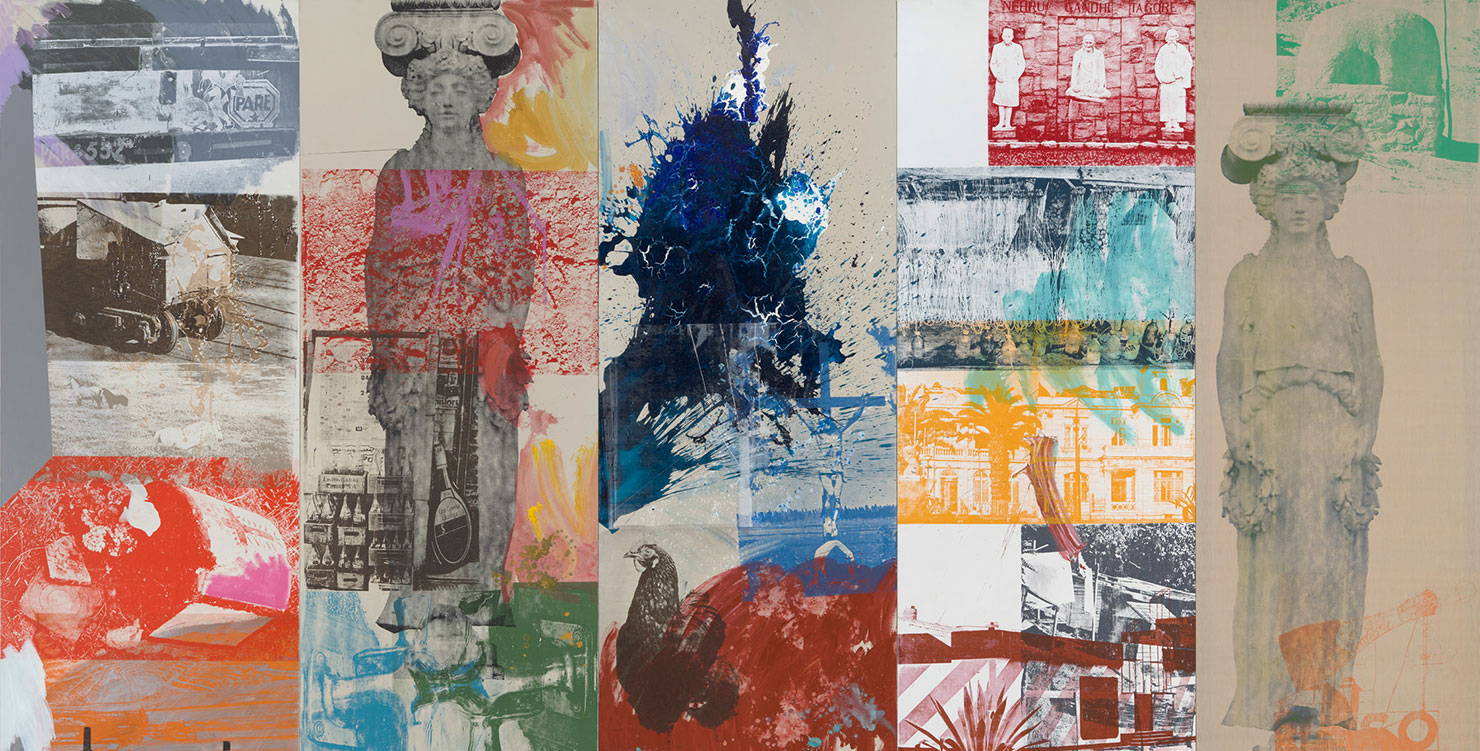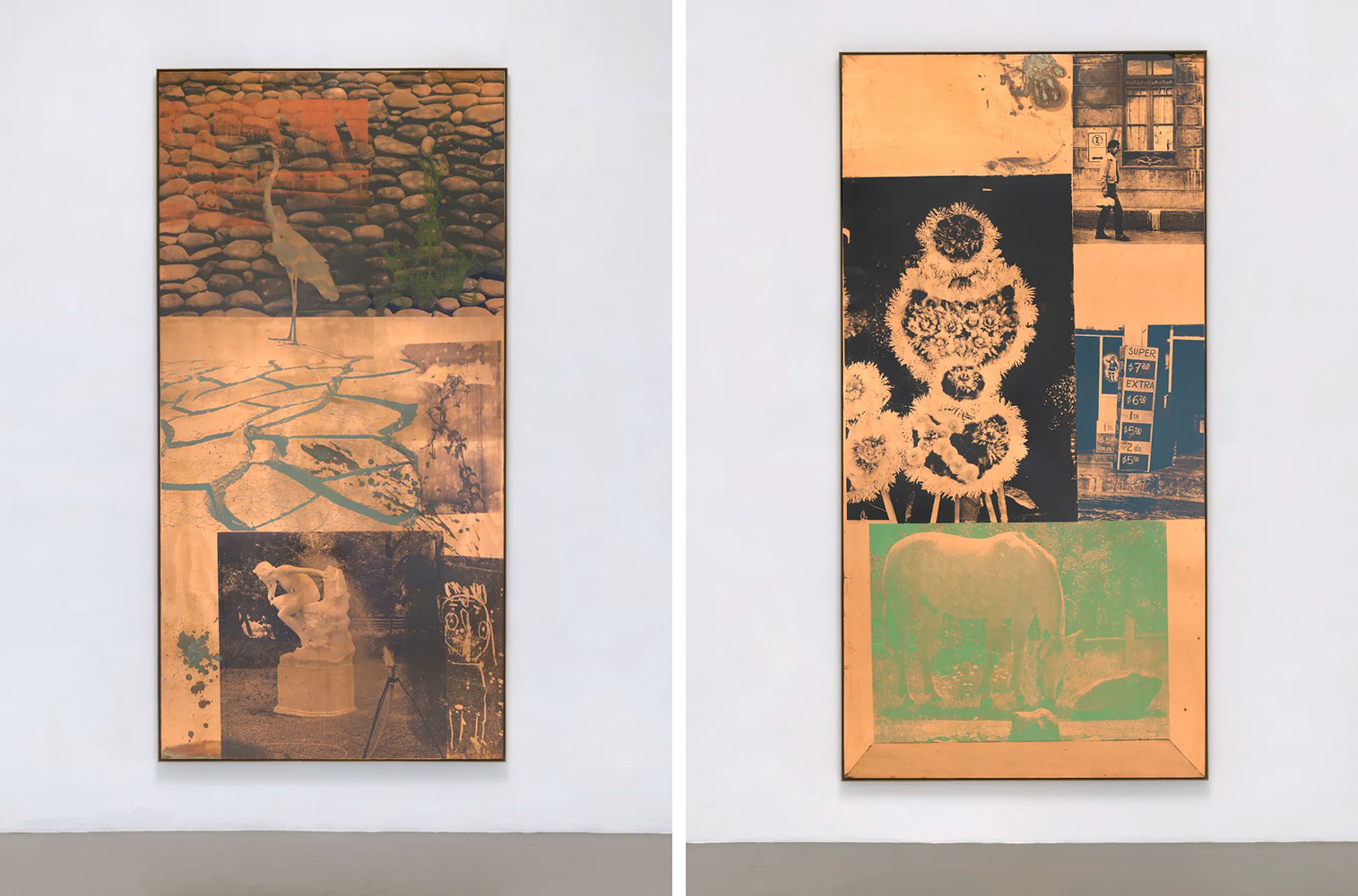PREVIEW: Robert Rauschenberg-ROCI
 Over the course of his 60-year career, Robert Rauschenberg’s work was inspired by wide-ranging experiences, lifelong collaborations, and a spirit of experimentation with new materials and techniques. Although he demurred identification with any specific movement, he has been identified as a forerunner of practically every post-war artistic development since Abstract Expressionism. He revolutionised the picture plane through the inclusion of everyday objects, which he termed ‘gifts from the street’, redefining and expanding the boundaries of what could be considered an artwork.
Over the course of his 60-year career, Robert Rauschenberg’s work was inspired by wide-ranging experiences, lifelong collaborations, and a spirit of experimentation with new materials and techniques. Although he demurred identification with any specific movement, he has been identified as a forerunner of practically every post-war artistic development since Abstract Expressionism. He revolutionised the picture plane through the inclusion of everyday objects, which he termed ‘gifts from the street’, redefining and expanding the boundaries of what could be considered an artwork.
By Dimitris Lempesis
Photo: Thaddaeus Ropac Gallery Archive

Between 1984 and 1991 Robert Rauschenberg undertook a monumental cultural exchange programme to foster mutual understanding between different cultures through artistic expression. The Rauschenberg Overseas Culture Interchange (ROCI), pronounced ‘Rocky’ after the artist’s pet turtle, foregrounds his conviction in art as a force for positive social change, along with the role of travel as a key catalyst for his characteristically experimental approach to materials and techniques. Spanning the entirety of the seven years of ROCI’s intense creative production, the exhibition at Thaddaeus Ropac London encompasses canvases, sculptures, cardboard works, neon light, photogravures and textiles, as well as an example of the artist’s earliest metal paintings. Presenting works directly from the Robert Rauschenberg Foundation, this is the first gallery survey dedicated to ROCI since the conclusion of the project in 1991. The ROCI works, many of which are also shown publicly for the first time since the project ended, are contextualised with archival materials. A selection of the artist’s black-and-white photographs, taken as source material during his travels and used for the silkscreen images in the ROCI works, are also included. Acutely aware of contemporaneous global tensions, Rauschenberg sought to realise a large-scale touring exhibition primarily in countries where access to contemporary Western art and freedom of artistic expression were limited or non-existent. Almost entirely funded by the artist, ROCI ultimately travelled to 10 countries outside of the United States: Mexico, Chile, Venezuela, China, Tibet, Japan, Cuba, the Soviet Union, Germany (Berlin) and Malaysia, concluding in the U.S. with an exhibition at the National Gallery of Art in Washington, D.C. Working with a small team, Rauschenberg undertook a research trip to each participating country ahead of the corresponding leg of the exhibition to visit sites of interest and meet with local artists, artisans and prominent cultural figures. He then returned to his studio in Captiva, Florida, where he translated his experiences into a new body of work, which was subsequently exhibited alongside the touring retrospective of the artist’s work and a selection of ROCI pieces from the previous countries. Each iteration of the exhibition consequently facilitated a dialogue between the participating countries through the works assembled, while simultaneously offering an overview of Rauschenberg’s practice to audiences who may have had little or no exposure to contemporary Western art. Meaningful contact with other cultures was an enduring source of inspiration for Rauschenberg throughout his career. He travelled internationally with artist Cy Twombly in the early 1950s and then again as a set and costume designer for the Merce Cunningham Dance Company’s world tour in 1964. He created a series of paper works with the artisans at an ancient Chinese paper mill in 1982. These travels and previous collaborations found expression in his artworks, which feature his pioneering experiments with materials and techniques and continue to inspire new generations of artists working today. It was in the course of his ROCI research trip to Chile that he began working on copper as a sign of solidarity with the Chilean people. The “Copperhead-Bites / ROCI CHILE” (1985) fuse artistic innovation with the artist’s desire to reflect the socio-political conditions of the people he encountered, many of whom worked in copper mines during the oppressive regime of dictator Augusto Pinochet. At the same time, the artist was cultivating his own artistic evolution, resulting in the production of 15 metal painting series over the following decade. Elsewhere in the exhibition, Rauschenberg’s use of materials gestures to continuity within his practice. For “ROCI VENEZUELA” (1985) he integrated three-dimensional found objects onto supports silkscreened with photographic imagery. Recalling his earlier “Combines” (1954–64), they blur the traditional boundaries between painting and sculpture, image and object. This non-hierarchical approach also finds expression in the “ROCI TIBET” (1985) sculptures assembled from everyday objects – chairs, a typewriter and a fire hydrant – as well as the cardboard boxes unfolded and arranged in a modernist cubic formation for “ROCI MEXICO” (1985). In turn, hanging fabric works created for “ROCI USSR” (1989) recall the unstretched textile supports used for Rauschenberg’s solvent transfer images in the “Hoarfrosts” (1974–76) and the sewn fabric “Jammers” (1975–76), the latter inspired by a trip to a textile centre in Ahmedabad, India. ROCI also marked the artist’s return to direct silkscreening, a technique he had rarely used in painting since the early 1960s. While his earlier screenprinted paintings feature images taken from mass media, the ROCI works rely solely on his own photographs, which were primarily taken during ROCI research trips. Cropping, enlarging and colouring these images with ink, Rauschenberg layered them in complex compositions to draw unexpected resonances that reflect his own unique impression of the cultures and environments he encountered. Often juxtaposing these mechanically reproduced images with hand-applied elements, such as splashes of acrylic paint and corrosives that bit into the metal supports, he further mediated the documentary material through his own artistic intervention. At the conclusion of the ROCI project, Rauschenberg had created more than 125 paintings, sculptures and editioned objects and over two million visitors worldwide had seen a ROCI exhibition. In several of the countries he visited, ROCI was the first solo exhibition by a contemporary Western artist. Rauschenberg’s creative vision had a critical impact on a new global generation of artists.
Photo: Robert Rauschenberg, Night Post / ROCI MEXICO, 1985. Acrylic, fabric and tape on cardboard, approx. 214 x 397 x 10 cm (84.25 x 156.3 x 3.94 in)., © Robert Rauschenberg Foundation, Courtesy Thaddaeus Ropac Gallery
Info: Thaddaeus Ropac Gallery, Ely House, London, 37 Dover Street, London, United Kingdom Duration: 25/4-15/6/2024, Days & Hours: Tue-Sat 10:00-18;00, https://ropac.net/



Right: Robert Rauschenberg Copperhead-Bite IX / ROCI CHILE, 1985, Silkscreen ink, acrylic and tarnish on copper, 247.7 x 123.8 cm (97 1/2 x 48 3/4 in) , © Robert Rauschenberg Foundation, Courtesy Thaddaeus Ropac Gallery
